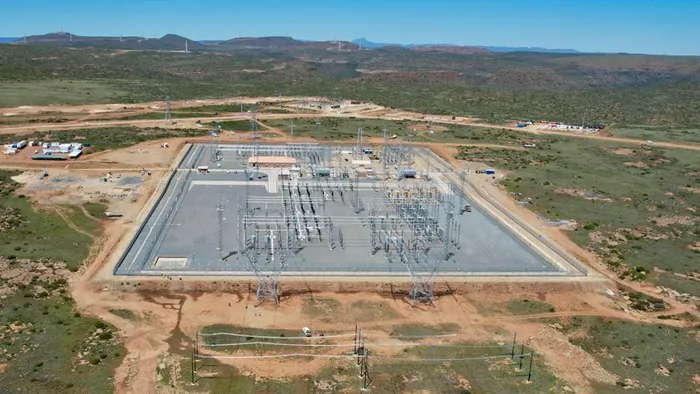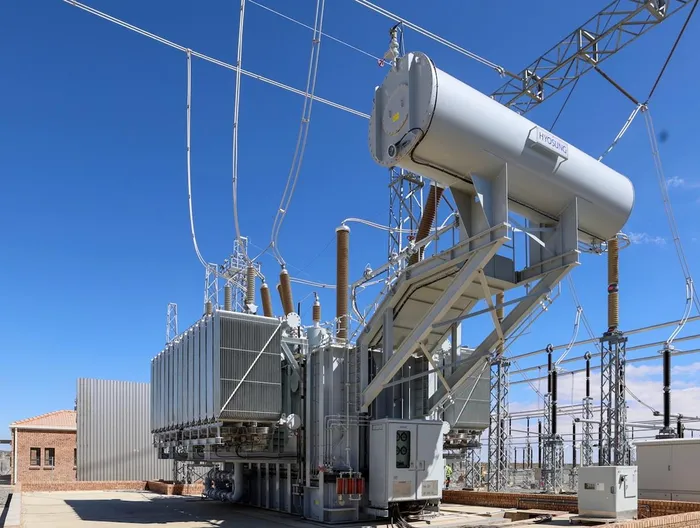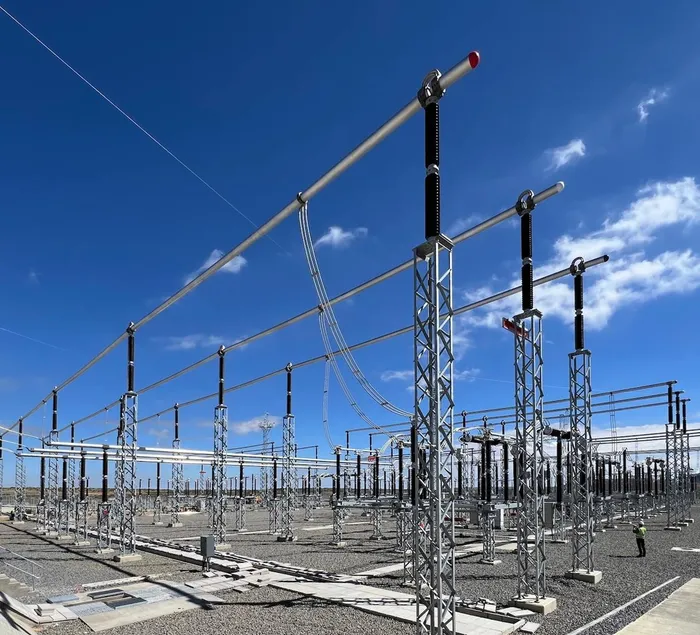EDF Renewables powers ‘first-of-its-kind’ energy project in Northern Cape

EDF Renewables has commissioned the Koruson main transmission substation.
Image: Supplied
A GROUNDBREAKING renewable energy milestone has been achieved just outside the small Northern Cape town of Noupoort, where South Africa’s first Main Transmission Substation (MTS) built by a private company has officially gone live.
Completed and energised on April 5, the Koruson 400/132 kV MTS is the first transmission substation in the country to be fully developed, financed, engineered, constructed, and commissioned by an Independent Power Producer (IPP). It’s also the first of its kind in more than seven years to be integrated into the national grid - and it happened right here in the Northern Cape.
Designed to connect a staggering 1.5 gigawatts (GW) of renewable energy to the national grid, the substation was built as part of a massive green energy initiative spearheaded by international renewable energy giant EDF Renewables, in partnership with H1 Holdings, Gibb-Crede, and a local community trust.
“This is the first greenfield transmission substation in more than seven years to be connected to the grid, and it is the first greenfield transmission substation that is a full self-build,” said Tshepo Tshivhasa, head of grid engineering at EDF Renewables. “It is also the first time that the National Transmission Company of South Africa (NTCSA) has approved a self-build scope of works of this magnitude.”
Located in the heart of a renewable energy development zone, the Koruson MTS forms the backbone of the adjacent Koruson 1 project cluster, which is being developed under Round 5 of the government’s Renewable Energy Independent Power Producer Procurement Programme (REIPPPP).
The MTS, which is integrated into an existing 400 kV overhead line, will provide the infrastructure for the renewable energy farms to complete their respective connections to the grid and start exporting energy.
Phase 1 of the energisation will see the Koruson 1 project connect three wind farms, totalling 420 megawatts (MW), to the grid. Phase 2, through the neighbouring Envusa Energy Koruson 2 project, will add two more wind farms and a solar plant, bringing another 520 MW online. Each facility will be linked to the MTS via its own 132kV overhead line and Eskom switching station, also built privately under the same self-build model.

Koruson MTS showing the main transformer.
Image: Supplied
“What makes this MTS unique is the implementation of a full suite of latest Phase 6 protection, control, and automation schemes, enhancing operational reliability and efficiency, some of which was specifically developed as part of this project,” said Carl Wlotzka, senior project manager at EDF Renewables.
The project’s completion is no small feat, given the complexity of integrating the MTS into the national grid. The substation’s connection required the replacement of two 400 kV towers with new transposition towers - just one of many technical challenges overcome during development.
“With advancements in technologies and the private sector taking on what typically used to be a grid operator project, one can expect to encounter challenges that need to be overcome,” added Wlotzka. “EDF Renewables, its contractors, and the national grid entity, continued to push through the challenges and table solutions to bring realisation.”
Tristan de Drouas, CEO of EDF Renewables, said the team is proud to have delivered a national first with major implications for South Africa’s energy future.
“The entire team has worked extremely hard and is incredibly proud to be part of this ‘first of its kind’ project, which will lay the foundations for future self-build (and NTCSA) projects in South Africa,” said De Drouas. “This project marks a significant step in strengthening South Africa’s renewable energy infrastructure while maintaining grid stability and efficiency.”
With the Northern Cape already established as a renewable energy hot spot, the success of the Koruson MTS adds to the province’s growing reputation as a leader in green energy innovation.

Koruson MTS.
Image: Supplied
Related Topics: